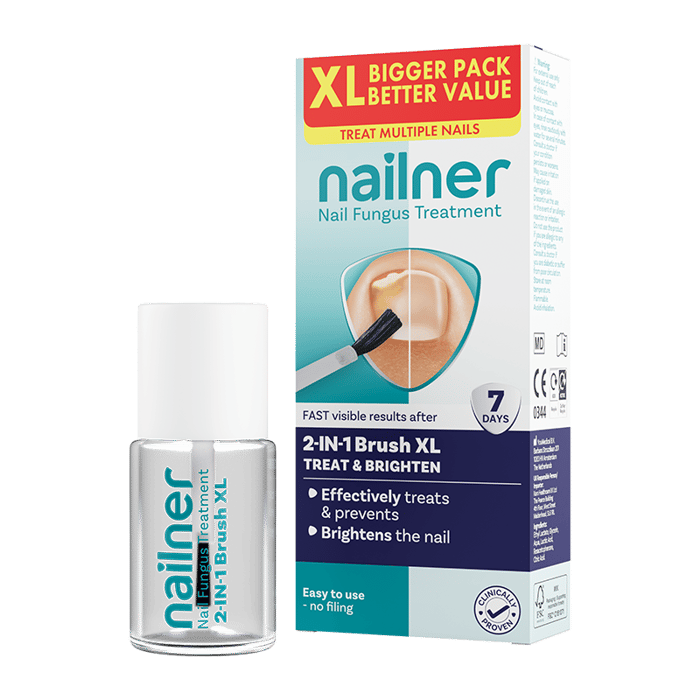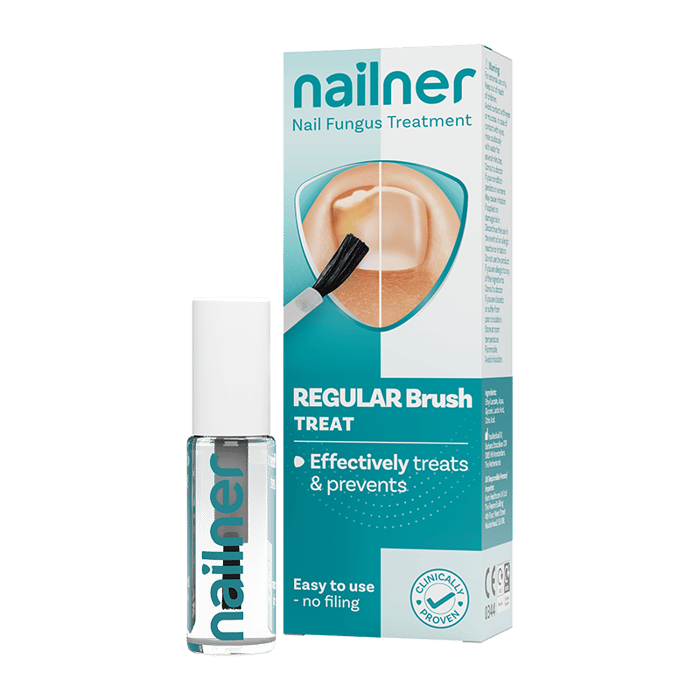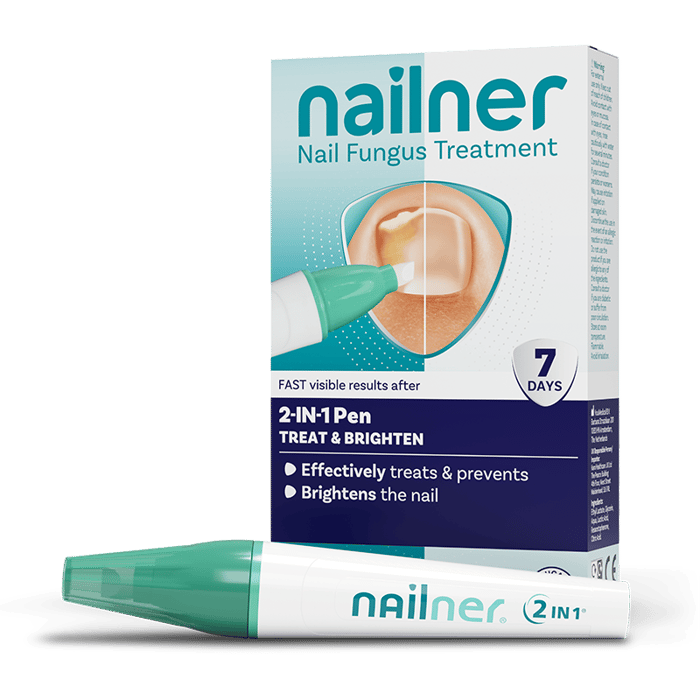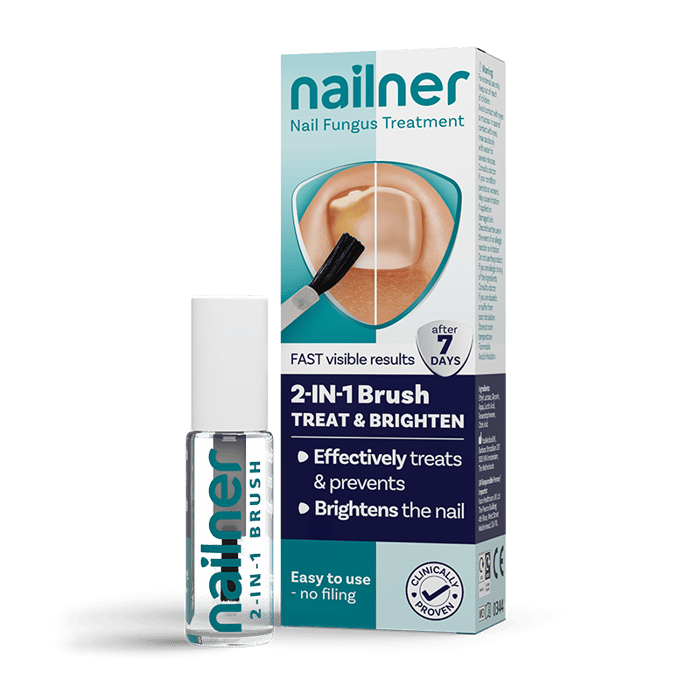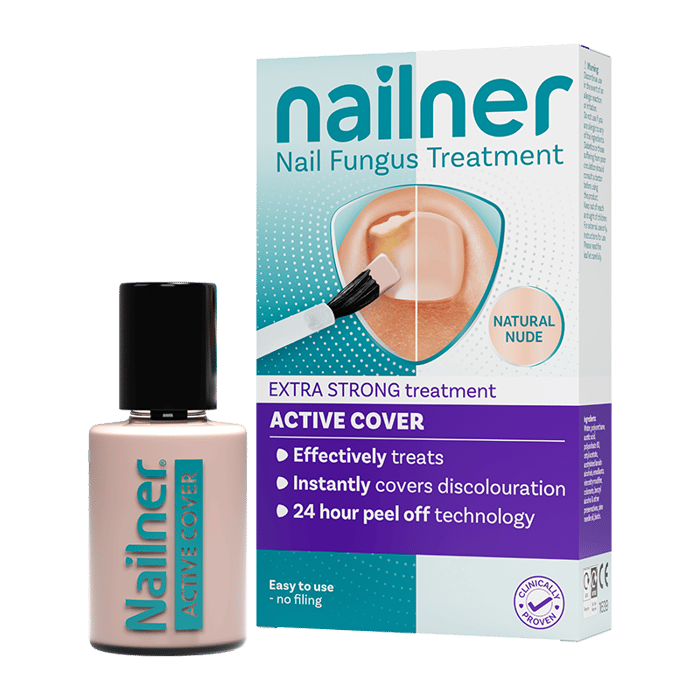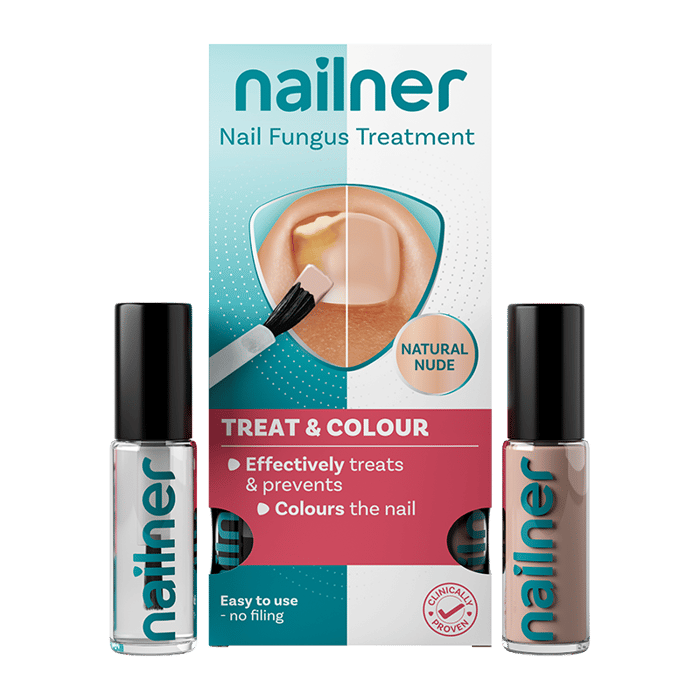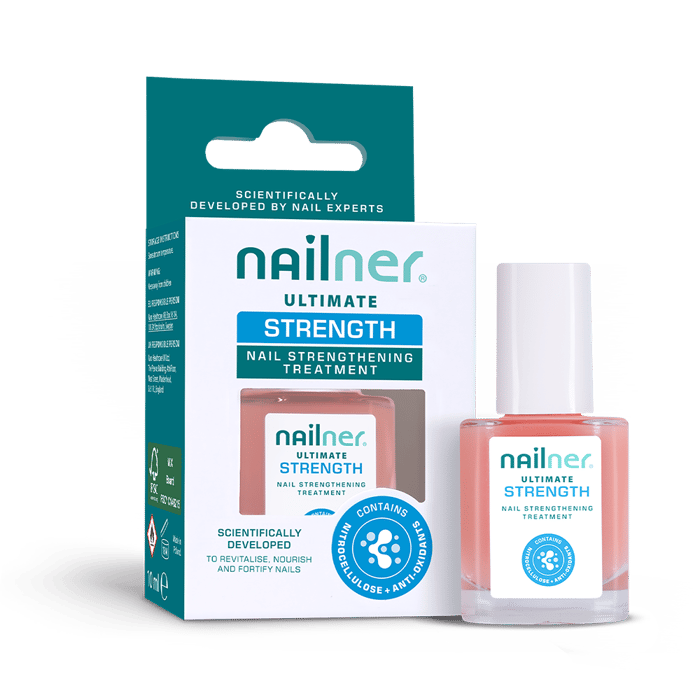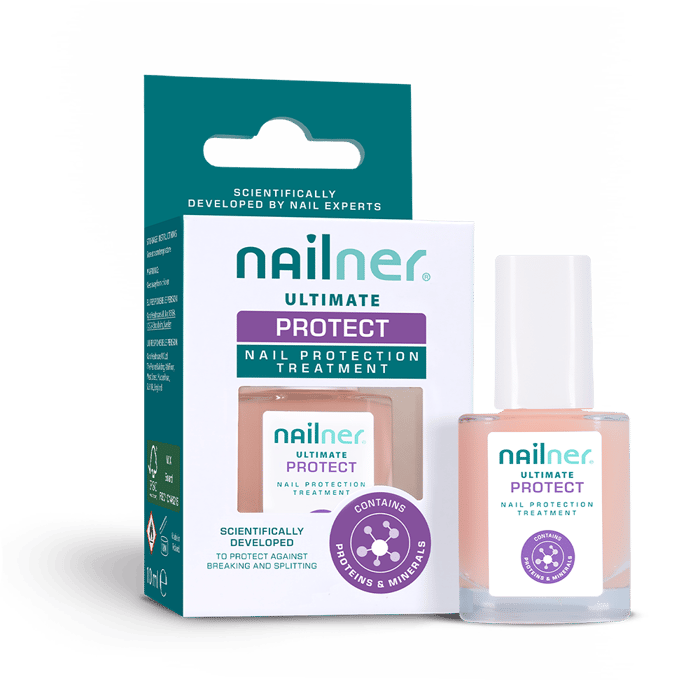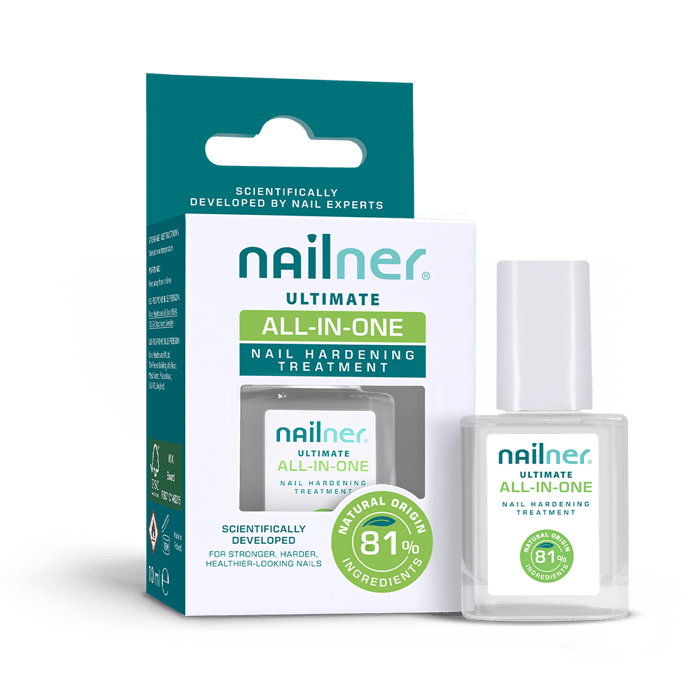Nail Infection
Do you suspect that you have a nail infection? If yes, you are far from alone.
Fungal nail infections affect as many as 1 in 10 people, and this soars to 1 in 2 in people aged 70 and over.
Although not many people like to talk about fungal infections, these are some of the most easily treatable nail problems.
Read on to discover:
What is a fungal nail infection?
A fungal nail infection is a common condition that can affect both the toenails and fingernails. However, it is more likely to affect the former.
Its medical name is onychomycosis, and it typically manifests itself in the appearance of brittle, discoloured, and thick nails.
Fungal nail infections can affect people of all ages, although they are more prevalent in people over 50 and those with weakened immune systems or poor circulation.
In terms of fungal nail infection causes, you are also more likely to get a fungal nail infection if you regularly visit public swimming pools without wearing flip flops or other protective footwear.
In most cases, a fungal nail infection is not a cause for concern and will get better with a nail fungus treatment.
How to identify a fungal nail infection
A fungal nail infection does not need to be diagnosed by a doctor in most cases, as the symptoms are easily recognised.
The most common symptoms of a fungal nail infection include:
- Thickened nails
- White or yellow discolouration
- Brittle, crumbly, or flaky nails
- Distorted shape
- A bad odour
Typically, a fungal nail infection will start at the outer edges of the nail and, if untreated, will start to spread across the whole nail.

How to treat a fungal nail infection
As mentioned, the quicker you start a nail fungus treatment, the better. There are over-the-counter products such as Nailner for nail fungus treatment. This is applied topically to the affected nail.
When it comes to pills for treating a fungal nail infection, you don’t need to make an appointment with your doctor to get a prescription.
You should notice an improvement in your nail infection in between 10-14 days. However, it will take several months for a new, healthy nail to grow.
Other treatments for fungal nail infection
If an over-the-counter treatment is not effective or you have a very severe fungal nail infection, your doctor may prescribe an anti-fungal medication such as:
- Terbinafine (Lamisil)
- Itraconazole (Sporanox)
- Fluconazole (Diflucan)
- Griseofulvin (Gris-PEG)
Alongside this, they may also prescribe other anti-fungal treatments such as anti-fungal nail lacquer or other topical solutions.
It is worth knowing that these prescribed anti-fungal medications can cause some unwanted side effects, although these are rare. The most common side effects to the above medications include:
- Headaches
- Itchy skin
- Loss of taste
- Nausea
- Diarrhoea
You cannot take oral anti-fungal medications if you are pregnant or have certain conditions as they can damage your liver.
Alternatively, your doctor may suggest laser treatment to destroy the nail fungus. However, this nail infection treatment is not covered by the NHS, and there is no evidence to suggest that this permanently eliminates nail fungus.
Some people also try home treatments for fungal nail infections, but these are not medically approved and are not effective at clearing up the nail fungus.
What is a bacterial nail infection?
A bacterial nail infection, on the other hand, typically occurs when an area around your nail has experienced some form of trauma and a bacterial agent has been introduced.
Its medical name is paronychia, and it can occur in the short term (acute), but it can sometimes be an infection that keeps coming back (chronic).
With a bacterial infection, the surrounding skin may appear red and swollen, and the nail is likely to be distorted and discoloured also.
Bacterial nail infections are more common in people who are regularly exposed to irritants, those who bite their nails and/or cuticles, and people with skin conditions. If you work with water all day, such as in a bar, laundrette, or similar place of work, you are also more likely to develop a bacterial nail infection.
In most cases, a bacterial nail infection does not cause any serious health problems and will get better with a course of antibiotics.
How to identify a bacterial nail infection
- Pain, swelling, or tenderness around the nail
- Skin that is red and warm to touch
- White or yellow pus underneath the nail
If left untreated, a bacterial nail infection can cause the nail to grow abnormally, and you may develop ridges or waves. In severe cases, the nail may fall off entirely.
How to treat a bacterial nail infection
A bacterial nail infection does not need to be diagnosed by a doctor and can be identified by the following symptoms
The most common treatment for a bacterial nail infection is antibiotics. These must be prescribed by your doctor or another healthcare professional.
In the vast majority of cases, this will kill the infection and help aid the nail-healing process. Make sure that you finish your entire course of antibiotics, even if the symptoms go away before this time.
If the infection has become severe and there is a build-up of pus in and around the nail bed, then your doctor may decide to drain this, as well as prescribe antibiotics.
What happens if you don’t treat a nail infection?
Nail infections are typically easy to treat with either a course of antibiotics or anti-fungal medicine. However, if left untreated, a nail infection can cause a whole host of problems.
If you fail to treat a fungal nail infection, the infection will only get worse. You are likely to notice your symptoms start to spread across the whole nail, and parts, or all of the nail, may break off.
In severe cases where treatment has not been given, you may struggle to put on shoes and even walk without a great deal of pain and discomfort.
For those with type 2 diabetes, untreated fungal nail infection can be extremely dangerous and can result in the need for amputation.
If you do not treat a bacterial nail infection, the infection can go deeper into the finger or toe and lead to a more serious infection. Worst case scenario, the underlying bone can also become infected.
How to prevent fungal nail infection
If you are prone to nail infections, it can be a good idea to take preventative measures to reduce your risk of further infections.
Some of the most effective ways to prevent fungal nail infections include:
- Dry your hands and feet thoroughly after showering, bathing, or swimming
- Limit your use of artificial nails
- Limit your use of nail polish
- Only visit reputable nail salons with a good hygiene rating
- Wear flip flops or other footwear when visiting a swimming pool
- Use separate nail clippers for fungal nail infection
- Avoid going barefoot in public places
- Wash your hands after touching infected fingernails or toenails
- Discard any footwear that you have worn when fighting off a fungal infection
You may also want to keep some anti-fungal foot sprays or powders in your medicine cupboard for times when you feel an infection coming on or even if your feet are feeling sweatier than usual.
Also, moisture-wicking socks can be highly effective at keeping your feet cool and sweat-free in the warmer months.
How to prevent a bacterial nail infection
Typically, bacteria gets into the skin via broken skin or hangnails, trauma to the nail or nail bed, or ingrown nails. Therefore, if you want to prevent a bacterial nail infection, you should:
- Avoid biting or chewing your nails or hangnails
- Do not cut your fingernails or toenails too short
- Wash your hands regularly and keep your nails clean
- Use gentle soaps that don’t irritate the skin
- Moisturise your nails and cuticles
- Wear waterproof gloves if you work with chemicals or if your hands are wet for long periods of time
Home remedies for nail infection
While there are home remedies for a fungal nail infection, this should be used alongside an over-the-counter anti-fungal treatment, not instead of one.
Some of the most popular home remedies for fungal nail infections include:
- Tea tree oil
- Oregano oil
- Vinegar
- Snakeroot extract
- Baking soda
If your fungal nail infection is severe or recurrent, then you should avoid the above home remedies and instead make an appointment with your doctor as you may have an underlying condition that is causing the fungus to develop.
To treat a mild bacterial infection at home, soak the infected area in warm water for 5 minutes, twice a day. This can help to drain any pus from under the nail bed. Make sure that you gently dry the area afterwards.
Nail infection FAQs
How do you treat an infected fingernail?
If your fingernail is infected with a fungus, then an over-the-counter anti-fungal medicine is the most effective treatment. This can be taken orally or applied topically to the infected nail.
If you have a bacterial infection, then you will need a course of antibiotics that must be prescribed by your doctor.
Is a nail fungal infection contagious?
Yes, a fungal nail infection is contagious and can be easily spread through direct contact with an infected person. You can also catch a fungal nail infection by touching an infected surface.
The most common place to catch a fungal infection is at a swimming pool, as nail fungus thrives in this moist and warm environment. Therefore, always wear flip-flops or another form of footwear when walking around these public places.
Does a fungal nail infection spread?
Yes, if left untreated, a fungal nail infection will spread and worsen. In the early stages of a fungal nail infection, the outer edges of the nail are most likely to be affected. However, the longer you leave the infection, the more it will spread across the entire nail.
This can result in partial or complete nail loss.
How much is laser treatment for fungal nail infection?
Depending on the private practice that you choose, you can expect to pay between £30-£70 per session.
It is worth noting that laser treatment has not been proven to be effective in the long-term treatment of nail fungus. Instead, try an over-the-counter anti-fungal medication such as Nailner Nail Fungus Treatment which is highly effective at killing fingernail and toenail fungus.
Can a nail infection cause sepsis?
The vast majority of infections can cause sepsis if left untreated for too long, including a nail infection. In particular, a severe ingrown nail infection, a big thumbnail infection, or a big toenail infection can lead to sepsis.
Can a nail infection be cured?
A nail infection can be successfully treated and cured at the time, but there is always a chance that the infection will return. This could either be in the same nail or in another one.
To reduce your risk of recurring nail infections, make sure that you complete your entire course of antibiotics or anti-fungal medication. Even if the infection appears to have gone, you must finish your treatment.
Does a fungal nail infection cause the nail to soften and detach?
If left untreated, a fungal nail infection can cause the nail to separate from the nail bed and eventually detach. However, this can be avoided by taking anti-fungal medication as soon as you notice the infection start to appear.
If an infected nail falls off, will the infection go?
Even if your toenail falls off, you need to take medication for the infection for up to 12 weeks, and you won’t see any results until the new toenail has grown back.

